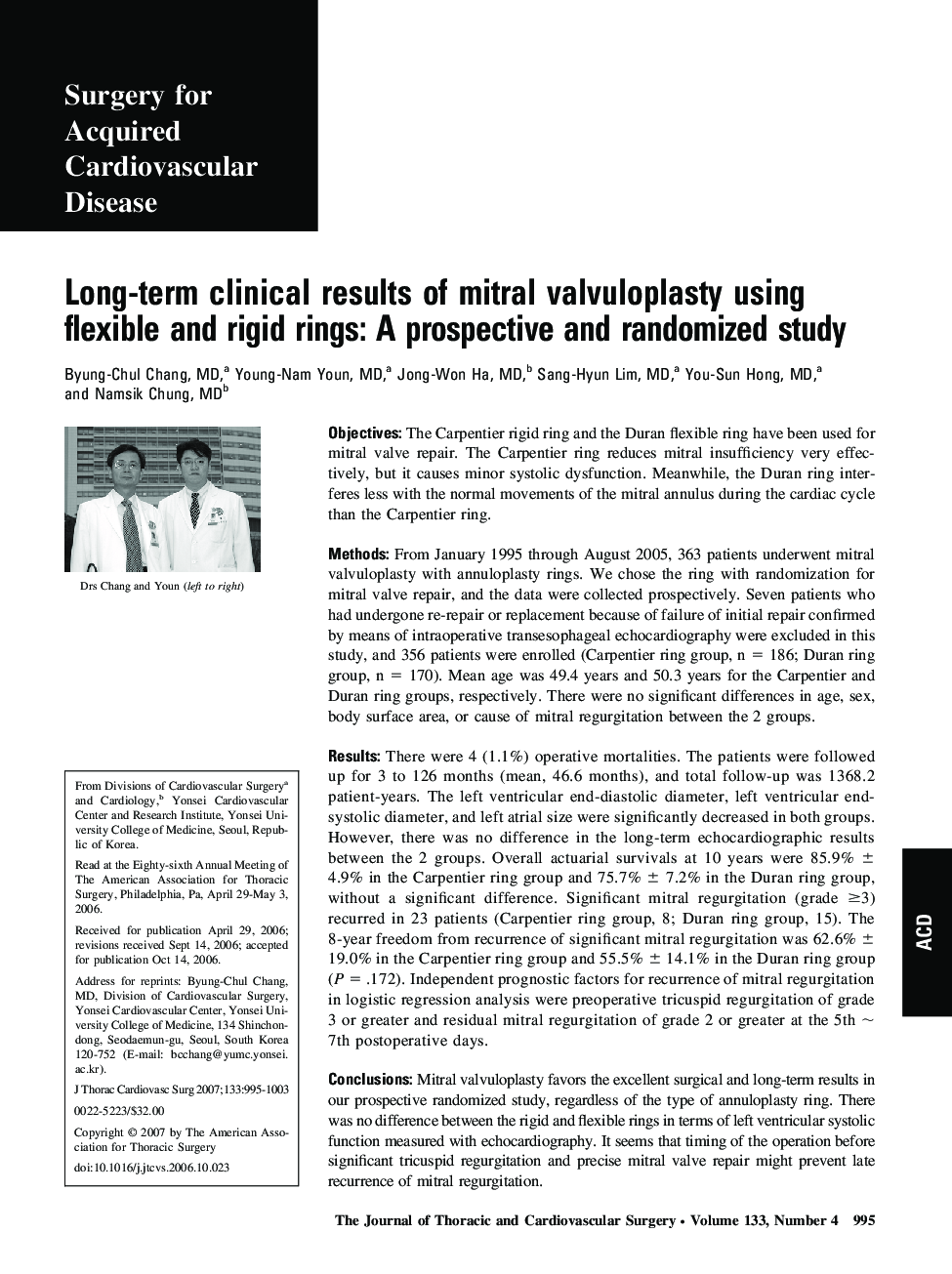| Article ID | Journal | Published Year | Pages | File Type |
|---|---|---|---|---|
| 2986945 | The Journal of Thoracic and Cardiovascular Surgery | 2007 | 9 Pages |
ObjectivesThe Carpentier rigid ring and the Duran flexible ring have been used for mitral valve repair. The Carpentier ring reduces mitral insufficiency very effectively, but it causes minor systolic dysfunction. Meanwhile, the Duran ring interferes less with the normal movements of the mitral annulus during the cardiac cycle than the Carpentier ring.MethodsFrom January 1995 through August 2005, 363 patients underwent mitral valvuloplasty with annuloplasty rings. We chose the ring with randomization for mitral valve repair, and the data were collected prospectively. Seven patients who had undergone re-repair or replacement because of failure of initial repair confirmed by means of intraoperative transesophageal echocardiography were excluded in this study, and 356 patients were enrolled (Carpentier ring group, n = 186; Duran ring group, n = 170). Mean age was 49.4 years and 50.3 years for the Carpentier and Duran ring groups, respectively. There were no significant differences in age, sex, body surface area, or cause of mitral regurgitation between the 2 groups.ResultsThere were 4 (1.1%) operative mortalities. The patients were followed up for 3 to 126 months (mean, 46.6 months), and total follow-up was 1368.2 patient-years. The left ventricular end-diastolic diameter, left ventricular end-systolic diameter, and left atrial size were significantly decreased in both groups. However, there was no difference in the long-term echocardiographic results between the 2 groups. Overall actuarial survivals at 10 years were 85.9% ± 4.9% in the Carpentier ring group and 75.7% ± 7.2% in the Duran ring group, without a significant difference. Significant mitral regurgitation (grade ≥3) recurred in 23 patients (Carpentier ring group, 8; Duran ring group, 15). The 8-year freedom from recurrence of significant mitral regurgitation was 62.6% ± 19.0% in the Carpentier ring group and 55.5% ± 14.1% in the Duran ring group (P = .172). Independent prognostic factors for recurrence of mitral regurgitation in logistic regression analysis were preoperative tricuspid regurgitation of grade 3 or greater and residual mitral regurgitation of grade 2 or greater at the 5th ∼ 7th postoperative days.ConclusionsMitral valvuloplasty favors the excellent surgical and long-term results in our prospective randomized study, regardless of the type of annuloplasty ring. There was no difference between the rigid and flexible rings in terms of left ventricular systolic function measured with echocardiography. It seems that timing of the operation before significant tricuspid regurgitation and precise mitral valve repair might prevent late recurrence of mitral regurgitation.
